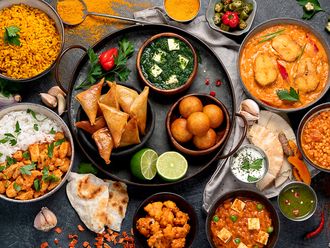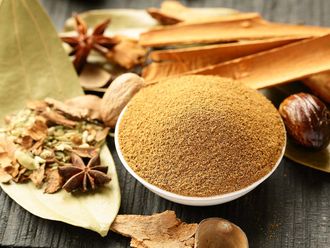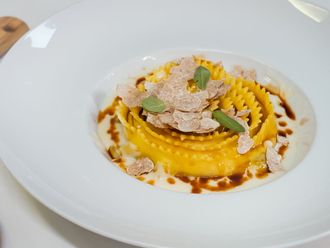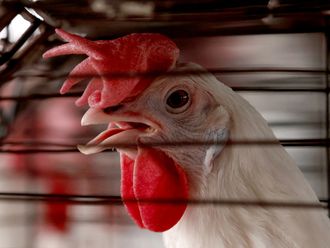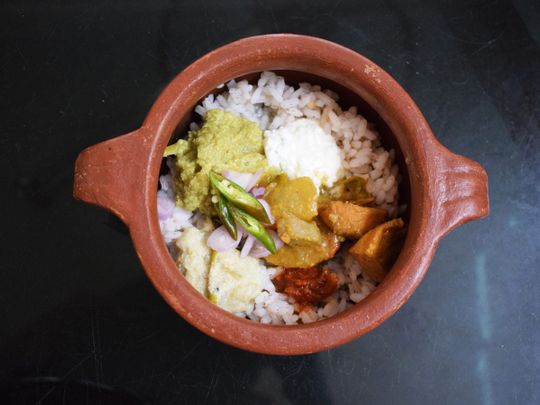
A blend of memories. That’s what 'Ormakoottu' means. Actually, it has nothing to do with memories and nostalgia. It’s a mere marketing gimmick. The good old pazhamkanji (fermented cooked rice and pronounced as ‘payyamkanzhi’) of Kerala has been repackaged as 'Ormakoottu' by a restauranteur to lure present day diners.
Pazhamkanji, which literally means old rice gruel, doesn’t need marketing. The age-old dish made from leftover rice can still be found on the breakfast menus of some restaurants across the Malayalam-speaking Indian state. It’s called called pazhankanji in some parts of the state; there’s a tiny phonetic difference. Yes, the ‘n’ instead of the ‘m’. In some parts of Thiruvananthapuram, the Kerala capital, it’s referred to as pazhinji.
What makes pazhamkanji different is that the leftover rice is not transformed into a new dish. It’s not cooked. There are no additives in the form of flour. It’s leftover food in its purest form.
Rice is a staple in many states of India, and they all have their versions of pazhamkanji. The taravani annam of Andhra Pradesh and Telangana is very similar. The Telugu-speaking people also call it chaddi annam, chaldi annam, saddi annam or onigiri. People of Tamil Nadu refer to it as pazhaya soru or pazhaya sadam. Travel to West Bengal and eat the same dish by the name of panta bhaat, accompanied by mashed potatoes (aloo sheddho). Order poita bhat in Assam and pakhala in Odissa, a similar dish will be served.
The lip-smacking fermented rice of Kerala
If you are a Keralite, chances are that you would have eaten pazhamkanji. For, it is found in most homes, irrespective of social status. It makes perfect sense to make pazhamkanji when you have leftover rice. No need to store it in the fridge. No cooking too.
Water is poured on leftover cooked rice, which ferments overnight. Crushed shallots and green chillies (kanthari) are added the next day to give it a spicy twist. And there you have pazhankanji. A dollop of yoghurt and pickles will transform it into a mouthwatering delicacy.
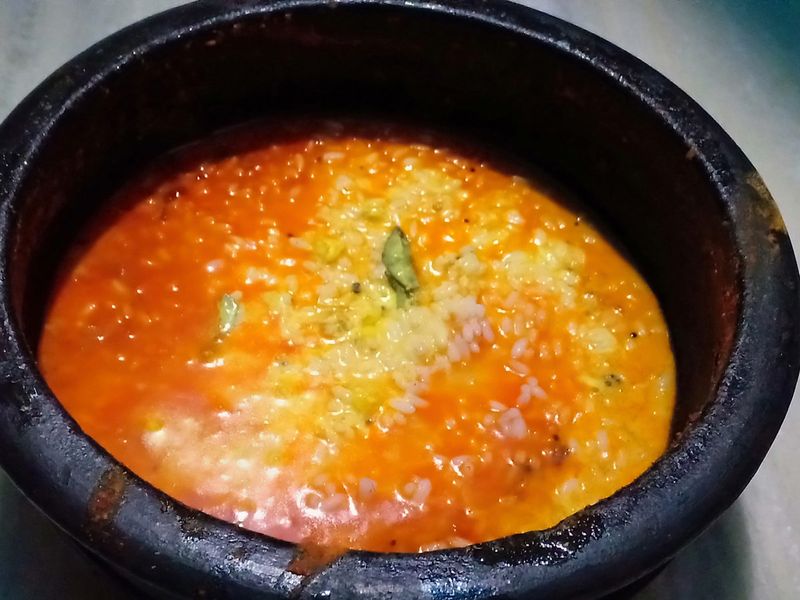
Over the years, a variety of accompaniments that include fried dried fish or fish curry have made it a wholesome meal. Some prefer chutney, others add tapioca curry. All those are personal preferences.
It's still popular in Andhra and Telangana
Chaddi annam, chaldi or saddi annam, in Telugu language, translates into cold rice. Although its origins are from leftover rice, it’s so popular in Andhra Pradesh and Telangana that rice is cooked these days solely to make the dish.
This is how Kolluru Mani, a teacher in Hyderabad, makes chaddi annam. Cold water or the water used in cooking rice (non-starchy) is poured on leftover rice in a pot to ferment overnight. This rice (tharvani) is usually eaten with mango pickle or gongura pickle, and a generous helping of ghee or butter, Mani says.
If you travel across Andhra Pradesh or Telangana, you will find several variations. The more popular one is the curd rice version.
Fermented rice as an ingredient
Fermentation can produce quite a distinctive, strong, and slightly sour flavours. So some dishes are made using leftover rice as an ingredient. But a common practice is to add yoghurt to leftover fermented rice. That makes for a kind of curd rice; the real curd rice is different as it’s made with freshly cooked rice and a combination of yoghurt and milk. Variations of curd rice made from leftover rice are found in all states in India where rice is consumed.
In Andhra Pradesh and Telangana, they make taravani charu, a kind of rasam (a tangy soup), by adding vegetables to the mix. The dough for Akki roti (flat rice bread) in Karnataka is a mixture of rice flour and leftover fermented rice. Sandige in Karnataka is vadam in Tamil Nadu and the Tamil-speaking people of Kerala. This crisp uses batter made from leftover rice.
Old rotis to make new dishes
Even leftover chappathis and rotis can be turned it delicious dishes. But they lack the distinct character of leftover rice, where fermentation lends a new flavour and additional nutrition.
In most dishes, leftover chappathis are ripped and boiled in a base of spicy sauce: Seya phulka, the Sindhi dish is a good example. In others, like malida laddu of Andhra Pradesh, chappathis are fried and crumbled to turn it into a sweet dish.
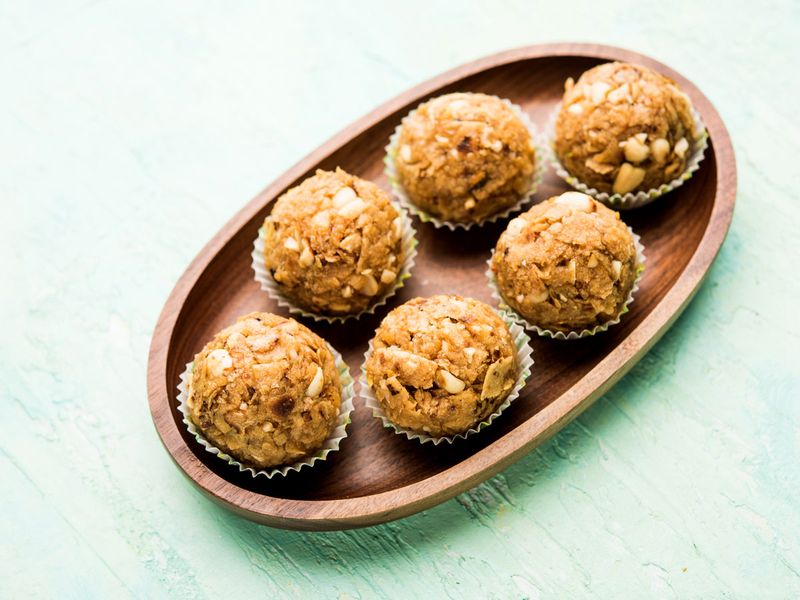
In Andhra Pradesh and Telangana, chappathis or rotis (unleavened Indian flat bread) are transformed into malida laddu. It’s an ideal snack, Mani says, adding that it makes for a quick lunch item for children.
This is how she makes malida laddu. The chappathis are first fried crisp in a flat pan with lots of ghee. It’s then mixed with powdered sugar or gud (jaggery), nuts and flavoured with cardamom powder.
The rice rotis of Karnataka
In Karnataka, leftover rice is mostly used to make rotis or flatbread. Generally the fermented rice is blended with rice flour to make the dough for the roti.
If you want odappe, dough is mixed with onions, green chillies, curry leaves, coriander leaves and grated coconut. Add some water as well. This is how Shantha Manjunath from Mangalore makes odappe. The golden brown rotis get their name from tawa (concave frying pan), which is called oda. Odappe also goes by the name of thalipattu and enne roti.
The basic dough is the same for ubbu roti too, but no vegetables are added. And it is cooked over the direct flame, not in a pan.
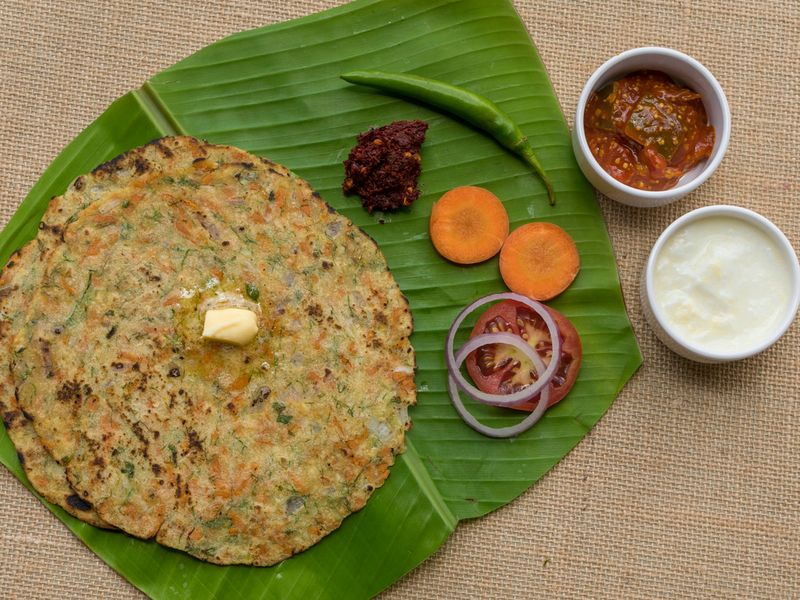
In some parts of Karnataka, leftover rice is added to make akki roti (rice flour roti) also. Akki roti can be made without fermented rice also, but leftover rice makes it softer. This rice bread is popular dish in Malnad and Kodagu region, but it’s known as ukkarisida rotti, coorgi rotti, rice bhakri and chawal ki roti in some regions.
The rice recipes of Tamil Nadu
“Brahmins [a Hindu caste] don’t eat leftovers because of theendal (contamination),” a friend told me. But Brahmins are not the only residents of Tamil Nadu. So there is a wide variety of rice dishes made from leftover rice. All these dishes are generally cooked with freshly made rice, but they can also be made with leftover rice as the base.
Pazhaya Saadam in Tamil Nadu is more or less like pazhamkanji in Kerala and chaddi annam in Andhra Pradesh. But they also use leftover millet porridge to make varagu arisi. These are the traditional ones.
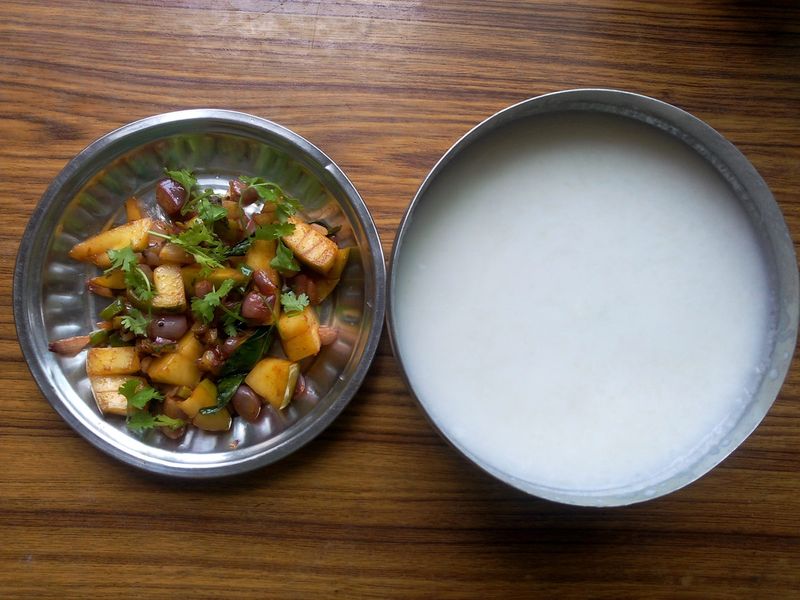
Leftover rice is great for rice recipes like coconut rice, raw mango rice, and tomato rice. Tomato rice (thakkali sadam) is quite a spicy one
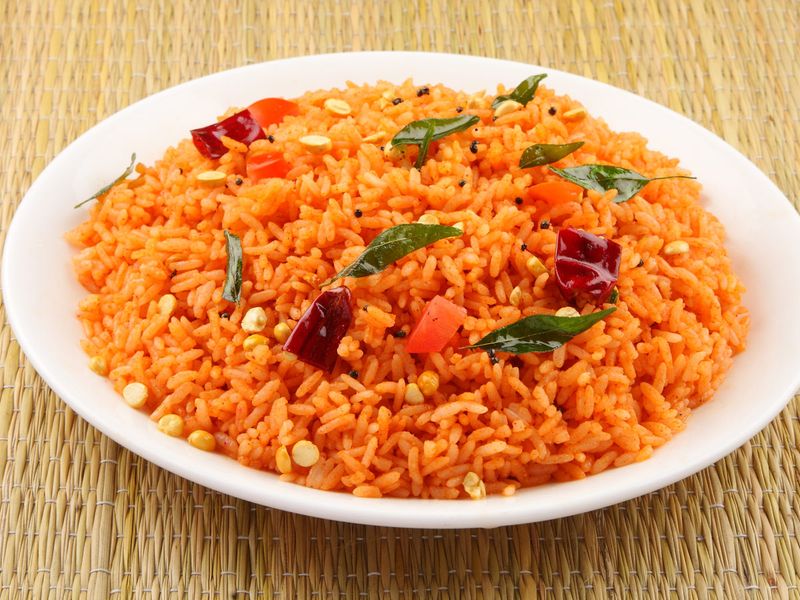
The origins of fermented leftover food
Where did pazhamkanji come from? There’s no historical records to trace its origins. Given its rudimentary recipe, it can be assumed that the dish was a product of the times.
The early part of last century was wracked by two world wars and a famine. Rations were a reality, and rice a luxury. So leftover rice had to be saved. There were no refrigerators or other devices to prevent spoilage. The warm weather of Kerala speeds up fermentation. So it makes perfect sense to make pazhamkanji.
There was a time when pazhamkanji was regarded as the food of the poor. In earlier days, kanji was served in earthen pots and eaten with spoon made of leaves from the jackfruit tree. Some reports say even the royals in Kerala enjoyed a bowl of fermented rice. The distinct flavour from fermentation has helped pazhamkanji cross the class divide.
How healthy is the food from leftovers?
Fermented foods are associated with a range of health benefits. They are rich in nutrients and beneficial bacteria (probiotics), which help improve digestion and enhance immunity.
Fermentation is said to increase the iron content in rice. Potassium in it eases fatigue, while calcium, magnesium and selenium help improve bone density. Antioxidants, vitamins B6 and 12 are also found in this dish.
During fermentation, microorganisms convert starches and sugars in vegetables and fruits into lactic acid, which acts as a preservative.
The return of the old favourites
Old is gold. That may well explain the resurgence of interest in pazhamkanji. But then Keralites always had a soft spot for this dish. But the renewed popularity owes mainly to restaurants who boldly promoted it and are reaping the rewards.
You can find pazhamkanji served in restaurants all over the state. In fact, it’s became so fashionable to slurp it that eateries have developed a variety of accompaniments. There are several restaurants in the UAE which serves several variations of pazhamkanji.
In Andhra Pradesh and Telangana, chaldi anna is so popular that they cook excess rice to keep aside for fermentation.
New dishes from leftovers…that’s a trend
Cooking has become a passion and pastime. Most amateur cooks are unafraid to experiment. So leftovers are refrigerated and turned into new dishes the next day.
Leftover iddlis (rice cakes) and puttu (steam cakes) never go waste. Idli uppma is popular in south of India, while puttu upma is found only in Kerala, where puttu is a breakfast food. These upmas are easy to make. Crumble idlis or puttu into a pan of tempering (mustard, red chillies and curry leaves fried in oil; shallots are optional), and your upma is ready.
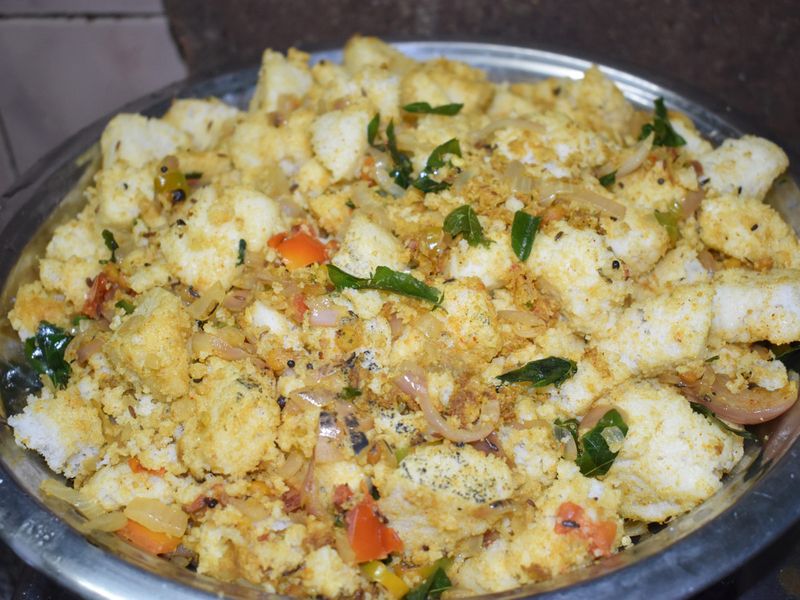
Dal curry can turn into sambar, rice with the clever addition of spices and frying can take the form of vadas. In fact, leftover rice can be the base for a variety of dishes. Masala rice, lemon rice, chitranna in Karnataka are some of the dishes that can be made from leftover.
Pack the leftover vegetables into moist old bread and fry them, you get bondas.
Leftovers should not be regarded as unwanted food. In these days of better storage, it makes perfect sense to turn them into exciting new dishes. Waste not, if it tastes good.
5 Recipes
PAZHAMKANJI
Ingredients
Leftover cooked rice – 1 cup (parboiled rice is ideal)
Green chillies – 1 or 2, sliced small (kanthari, if available)
Curd or yoghurt – ½ cup
Small onions or shallots – 2 (crushed or thinly sliced)
Salt – to taste
Cold water – 1 cup
Method
Put the leftover rice in a bowl (claypot is ideal), pour water and leave it to ferment overnight.
Next day, add onions, green chillies, salt, and curd to the fermented rice. Mix well.
Half a teaspoon of chopped ginger is optional, but it will add some zing to it.
Serve it with pickles or coconut chutney.
MALIDA LADDU – By Kolluru Mani
Ingredients
Leftover chappathis – 4
Cashewnuts – ½ cup, coarsely powdered (badam and pista can also be added)
Cardamom powder - ½ teaspoon
Jaggery – ½ cup, grated (adjust the sweetness, as required)
Ghee - as required
Method
Fry the leftover chappathis both sides on a flat pan with lots of ghee, till it becomes crisp
Grind the crisp chappathis to make a coarse powder.
Mix chappathi powder with cashewnut, cardamom, jaggery and ghee.
Knead it well and make it into laddu balls.
ODAPPE, TALIPATTU OR ENNE ROTI – By Shantha Manjunath
Ingredients
Rice flour – 250 gm
Onions – 2 medium size, finely chopped
Green chillies – 2 to 3, finely chopped
Curry leaves – 10, finely chopped
Cooking oil – 1 table spoon
Coconut – ½ cup, grated
Water – 1½ cup
Salt – 1 teaspoon
Curd/yoghurt – 1 cup
Leftover rice – 1 cup
Turmeric – ½ teaspoon
Method
Heat the water in a pan on low flame. Add salt and oil and mix well.
When it becomes warm, add rice flour and mix well
Blend in curd/yoghurt, grated coconut, curry leaves and leftover rice, and knead it well
Optional: You could also add finely chopped beans and capsicum, or even grated carrots and cabbage
Add a bit of water and oil, if necessary
After three to four minutes of kneading, make a fist-sized ball.
Rub oil on a sheet of aluminium foil or banana leaf, and spread the ball of rice into a flat round bread
Spread some cooking oil on a frying pan and fry both sides till golden brown.
Enjoy odapatte with pickles or chutney power
SEYLA PHULKA – By Alka Keswani
Ingredients
Chappathis or Phulkas (leftover or stale) – 4
Tomatoes – 2 (minced)
Green chillies – 2 (chopped)
Garlic – 4 cloves (minced)
Turmeric powder – ¼ teaspoon
Coriander powder – 1 teaspoon
Coriander leaves – 2 tablespoon (minced)
Curry leaf – 1 sprig
Mustard seeds – ½ teaspoon
Salt – to taste
Cooking oil – 1 teaspoon
Water – 1 cup
Method
Tear phulkas or rotis into small pieces and leaves them in a bowl of cold water
Heat oil in a frying pan, add mustard seeds and let it splutter.
Add curry leaves, garlic, ginger and green chillies. Saute it.
Add turmeric and coriander powder. A pinch of garam masala powder will make it better and give a good aroma
Stir in tomato, and wait till a bit of oil seeps out.
The rotis would have softened now. Drain the water and add the rotis/chappathis to the pan.
Mix it thoroughly and cook on medium flame for five minutes.
Garnish with coriander leaves and serve.
RICE BONDA – By Priya Anandakumar
Ingredients
Leftover cooked rice – 1½ cup
Onion –1 big (finely chopped)
Green chillies – 2 (finely chopped)
Cumin seeds – ½ teaspoon
Red chilli powder – ¾ teaspoon
Turmeric powder – ½ teaspoon
Garam masala – ¼ teaspoon
Pepper powder ¼ teaspoon
Chickpeas flour – 3 tablespoon
Salt – as needed
Curry leaves – 10-12 (finely chopped)
Lemon juice – ½ teaspoon
Oil – For frying
Method
Place the leftover cooked rice in a bowl, and mash it well with your hands. Or use a stick blender.
Add onions, green chillies, curry leaves, red chilli powder, turmeric powder, garam masala powder, pepper powder, cumin seeds, chickpeas flour, lemon juice and salt to the mashed rice.
Mix everything and knead really well with your hands.
Make small lemon-size balls and fry till they turn golden brown.
Tell us about your favourite dishes or recipes at food@gulfnews.com



